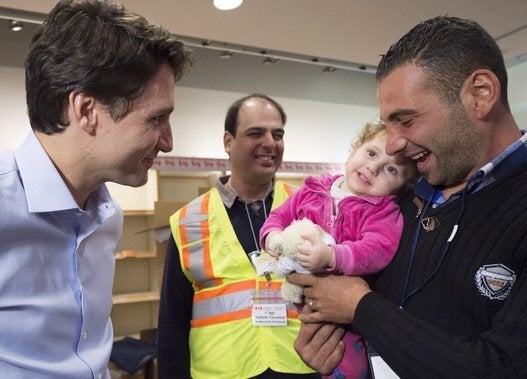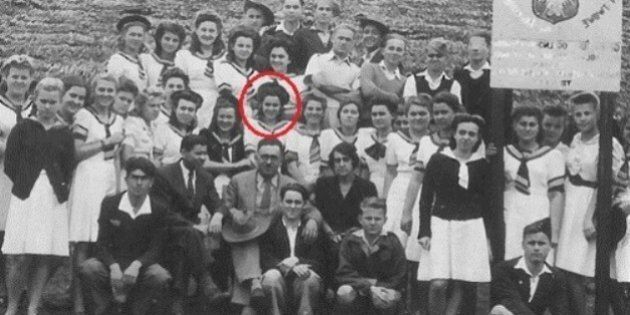
Polish refugee children at the refugee camp in Tengeru, Tanzania. Teresa Latawiec identified middle.
By Brett Tarver, World Vision Canada
The holiday season is a time for many Canadians to celebrate the wonder and potential of their children, typically with a shower of presents and other treats. And why not? It's one of the true joys of childhood. As new Syrian families arrive in Canada by the thousands, many parents no doubt pause to think of children struggling with the world's horrors -- including war.
I also take a moment to think about Teresa. Uprooted at age nine from the security of her home, Teresa was forced at gunpoint to leave everything she knew behind, never to return. She endured a long, perilous journey with little to eat and only the clothes on her back. Worst of all, this little girl watched helplessly as her mother died in the long exodus.
Although her struggle to survive is tragically similar to that of many of today's Syrian refugees, Teresa is not one of them. Teresa is my mother-in-law. Her full name is Teresa Latawiec, and she was a Polish refugee in the Second World War, which prompted the worst humanitarian crisis in history.
Stepping into the past
This May while travelling with World Vision, I happened across the Tanzanian village Tengeru, close to where Teresa settled as a little girl. Here, 5,000 Polish war refugees eventually came to the end of their trek. It was one of several Polish camps scattered across what was then the British Empire.
It was here that my children's grandmother (babcia, in Polish) slowly recovered her childhood. Parts of it, anyway. The story of how it all happened would make for a tragic but very dramatic movie.
Early in the war, Hitler and Stalin made a secret pact to invade Poland and each take half. Teresa's family happened to live in the new Soviet part. Because they were quasi-nobility, they were deemed "politically inconvenient." The Russians came knocking one day, forcing Teresa's family from their home at gunpoint. They were about to leave for forced labour in Siberia.
With only seconds to gather a few things, Teresa's mother, a practical woman, grabbed a handful of potatoes which would sustain their journey. All their possessions were lost forever. While most Canadian children have hundreds of photos of their lives and family members, no photographs survived from Teresa's childhood in Poland.

Painting of the deportation of Polish prisoners to Siberia. Author unknown. Photo/Kresy virtual museum
Teresa's family was put on cattle cars, joining more than 50,000 Polish prisoners in Siberian labour camps. Food was meager, barracks were barren. Work was hard and winters even harder.

Drawing of Polish child labourers at a Gulag in Siberia. Photo/Kresy virtual museum
With no winter boots, people wrapped their feet in scraps of cloth for protection from the bitter cold. This was their life for more than two years.

Polish prisoners bracing against the winter chill at a Gulag in Siberia. Photo/Kresy virtual museum
Things took a slight turn for the better in 1942, after the Soviets joined the Allies. The International Refugee Organization and the British government negotiated for the release of Teresa's family and the other Polish prisoners. They were allowed to travel south from Siberia to the Middle East.
Many of the Polish survivors were weakened by malnutrition and died during the journey, leaving a trail of graves through Russia, Kazakhstan and Persia. Tragically, Teresa's mother was among them. She was only the first family member about to leave Teresa's life. Soon after, her father joined other men to form the core of a new Polish army to fight the Nazis. The little girl would never see her dad again.
Little girl alone
Being different ages, Teresa, her two brothers and her sister were sent off in different directions. My mother-in-law, the capable woman who raised my wife and is a tremendous force in the lives of my two daughters, was a small girl alone in the world.
Babcia was loaded onto a ship with other women and children, and sent to an orphanage at a refugee camp in Tanzania. Life became a little better, but Polish refugees continued to die at camps across Africa from influenza and malaria. Many are buried at a little cemetery that is still maintained by the Polish government.
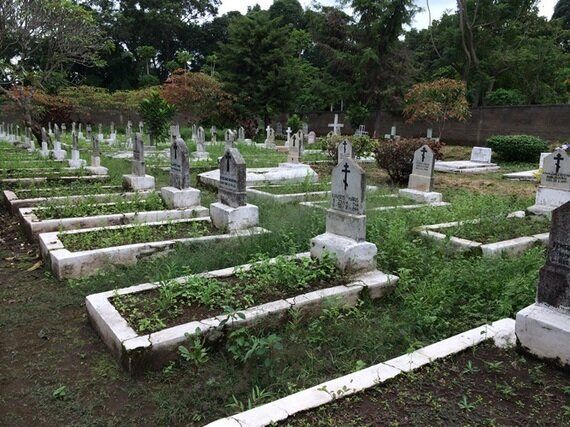
Polish refugee cemetery, Tengeru, Tanzania. Photo/Brett Tarver
In these camps, Teresa began to experience some of the many things she had lost. The camps were funded by the Polish government-in-exile with gold that was smuggled out of the country. They had a library, a YMCA and even a simple theatre. Although families lived in round mud huts, the hedges surrounding them were neatly trimmed. The camp's streets were named after Polish poets and composers.
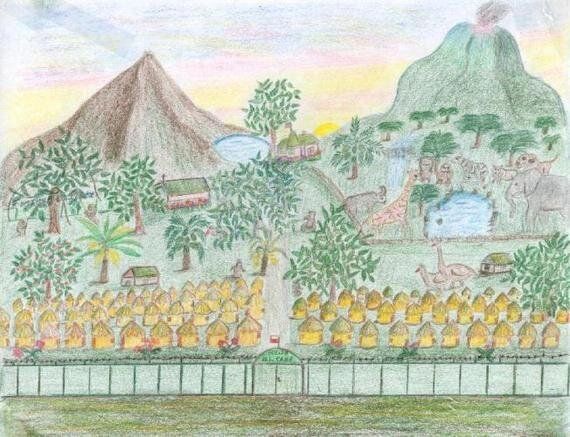
Child drawing of the Polish refugee camp in Tengeru, Tanzania, under the shadow of Mount Meru and Mount Kilimanjaro. Photo/Kresy Virtual Museum.
The refugees grew their own food and raised animals to feed themselves -- and they were good at it. After the war, the camp farm became Tanzania's agricultural research centre. They created crafts and sold their goods at market to help with the war effort.
Teresa was able to complete her studies at the camp school and went on field trips, just like children who were still living at home. Except for the giraffes and lions that wandered nearby, Teresa's life became much closer to the life Canadians have come to take for granted, one filled with the opportunity to fulfill her potential.
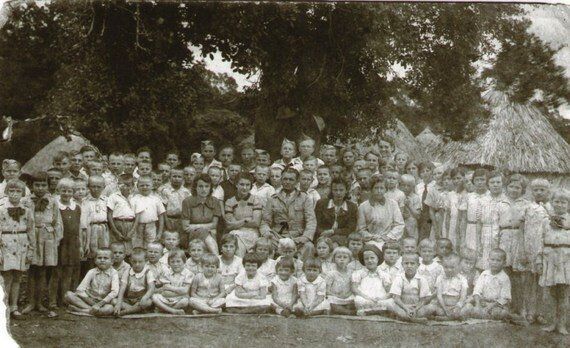
Polish refugee children pose for a photo in Tengeru, Tanzania. Photo/Kresy Virtual Museum.
After the war, many of these Polish refugees, including my mother-in-law, had the chance to come to Canada. The Our Lady Queen of Peace Polish Catholic church in Sarnia, Ontario, is a legacy of those exiles who found new lives in a new land.
Teresa married and raised a family of three children, including my wife. Without Teresa's resilience and those who did so much to help the refugees, her four grand-daughters would never have had the fortune to be been born in this country.
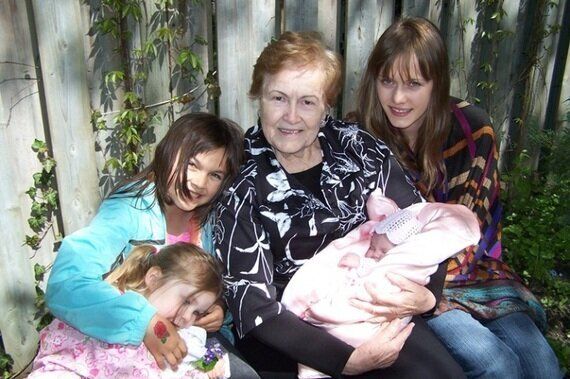
Teresa Latawiec with her four grand-children. From left to right: Paris, Veronika, Teresa, Violet, Katrina. Photo/Brett Tarver.
It was overwhelming for me to be in Tanzania this year and see where my mother-in-law spent much of her childhood. It was Mother's Day, 70 years after the war in Europe ended -- a war that took the lives of more than six million Poles. It felt fitting that I'd been brought near this spot by World Vision, an organization dedicated to helping the most vulnerable children. It was the same spot where Teresa and so many other children received help in the worst of times.
The perspective Teresa brings
Because of Teresa, I have immense empathy for today's child refugees, especially those who have fled the conflict in Syria. It is encouraging to see how Canadians are reaching out. We've opened our hearts to the millions of Syrians who have had to flee their homes. We're assisting the desperate refugees who are walking across Europe and preparing to open our borders to the 25,000 people who will be coming to Canada. There will likely be plenty of nine-year-old girls among them.
I'm inspired by UN Secretary General Ban Ki-Moon: "The one thing all children have in common is their rights. Every child has the right to survive and thrive, to be educated, to be free from violence and abuse, to participate and to be heard."
We can't always stop the wars that tear people from their homes and rip families apart. And we can't always stop history from repeating itself. But we can always do everything in our power to help the children who are the truly innocent victims of conflict.
Canadians can do their part by giving a warm welcome to Syrian newcomers and asking the Canadian government to do everything in its power to provide humanitarian assistance to those left behind and to support peace efforts, because it is only peace that will put an end to this humanitarian crisis.
MORE ON HUFFPOST:
